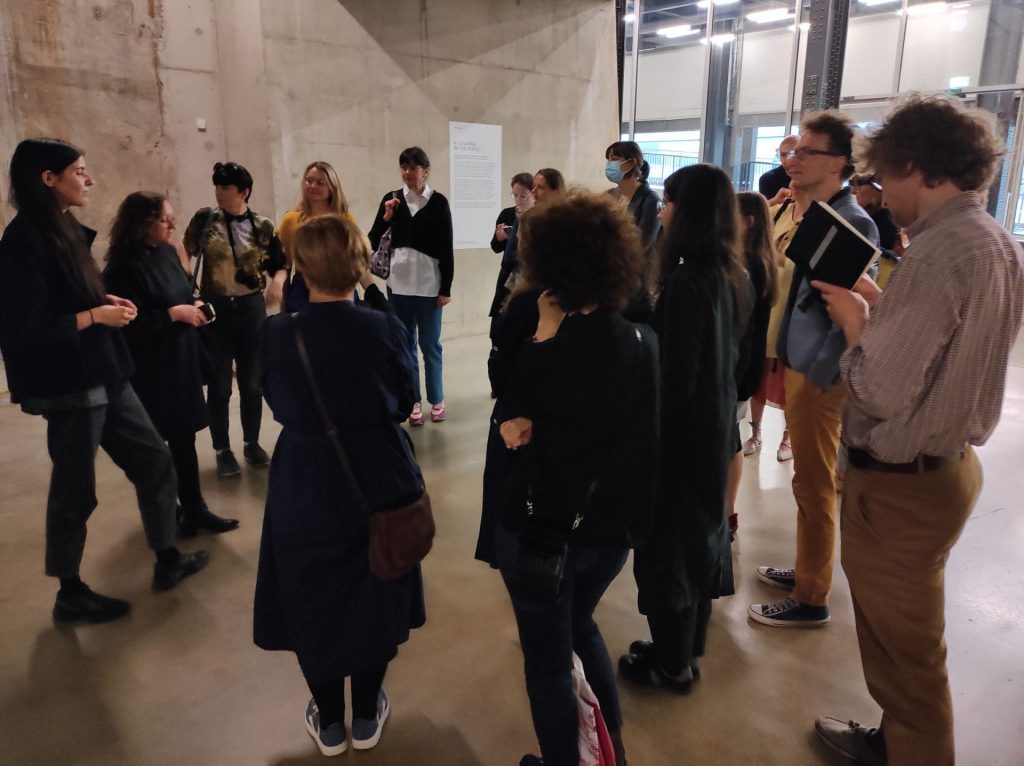Notes on Tate Modern’s collection and the mechanisms of acquisition
By confrontations, on 28 August 2022
By Magdalena Ziółkowska
The meeting with Tate Modern curators: Juliet Bingham (Curator of International Art), Natalia Sidlina (Adjunct Curator for Russian Art) and Dina Akhmedeeva (Assistant Curator) concerned the strategy of expanding the Tate collection with artists originating from Central and Eastern Europe, the presentation of new acquisitions within the framework of existing exhibition modules and the mechanisms of selection or valorization of artistic propositions.

Walking in the collection’s display organized according to notions such as “in the studio”, “media networks” or “performer and participant”, the visitors do not know the history of individual objects, neither the history of their appearance in the collection. This is often a long process based on many years of research with the participation of specialists from individual countries, following the art market, as well as gathering financial resources for a specific purchase. The expansion of the Tate Modern collection is structured according to the geographical sections and the line of committees dedicated to them. Their members provide not only the finances for particular acquisitions but have also an advisory voice and make decisions. Symbolic and artistic capital are here married with financial capability. In the case of such significant collections like Tate Modern or Centre Pompidou, it is always worth taking up the subject not only of the criteria of selecting individual artists (geography, presence in the canon), but of the particular vision and idea that defines the chosen directions of its development. There are few desirable names for many European collecting institutions such as Mirosław Bałka, and we heard it being recalled more than a few times. But what does it mean to have an installation or a sculpture by Bałka in the collection today? And what did it mean 20 or 30 years ago? Should the biggest institutions have a complete range of the most outstanding artists in their collections? Wouldn’t that unify them or end in mimicry, and take away their uniqueness?

On the one hand, the extraordinary installation of Romanian artist Ana Lupas – The Solemn Process from 1964/2008 – is finally appreciated on the worldwide scale and is exhibited in the collection. On the other hand, however, we can repeatedly say “it is definitely very late”. Western institutions are laboriously doing their basic art history homework in relation to artists from behind the Iron Curtain. In this regard, it is true to say that smaller art centres have an advantage over multi-venue institutions in terms of timing of action, decision making processes, and perceptiveness to the challenges of today’s world as reflected in artists’ works and attitudes. When we used to look at great museums we looked to them for the canon, appreciation and timeless values. Is that true today as well? The experiment about which Jerzy Ludwinski wrote in the mid-1960s – that institutions should collect attitudes or actions, acting as “sensitive seismographs” to catch the most interesting phenomena – seems highly desirable today. The question is whether the funders/sponsors of individual works in the collection such as Tate Modern would find a continued desire to support them if the symbolic capital changed its location to a less canonical position.
 Close
Close

